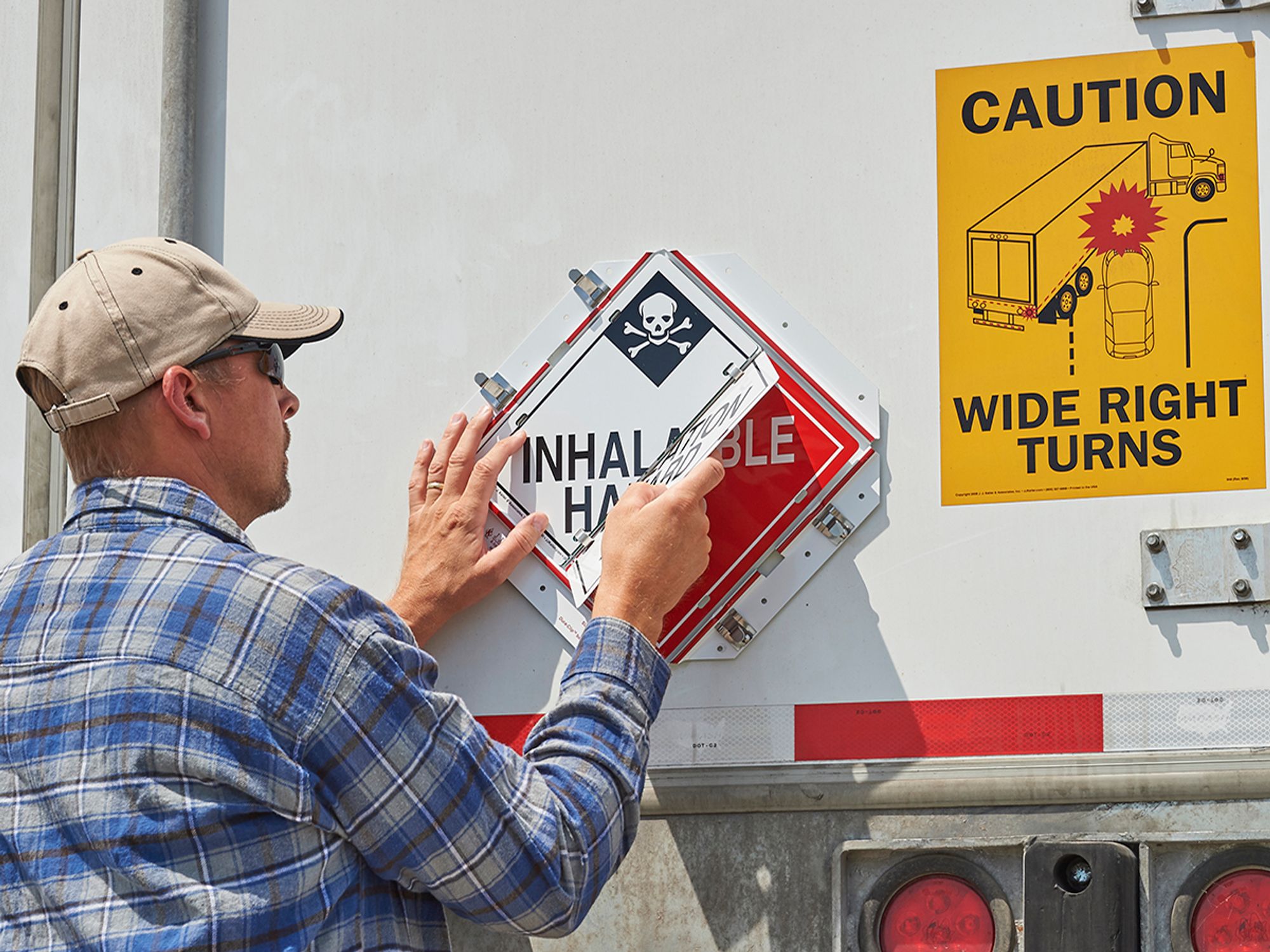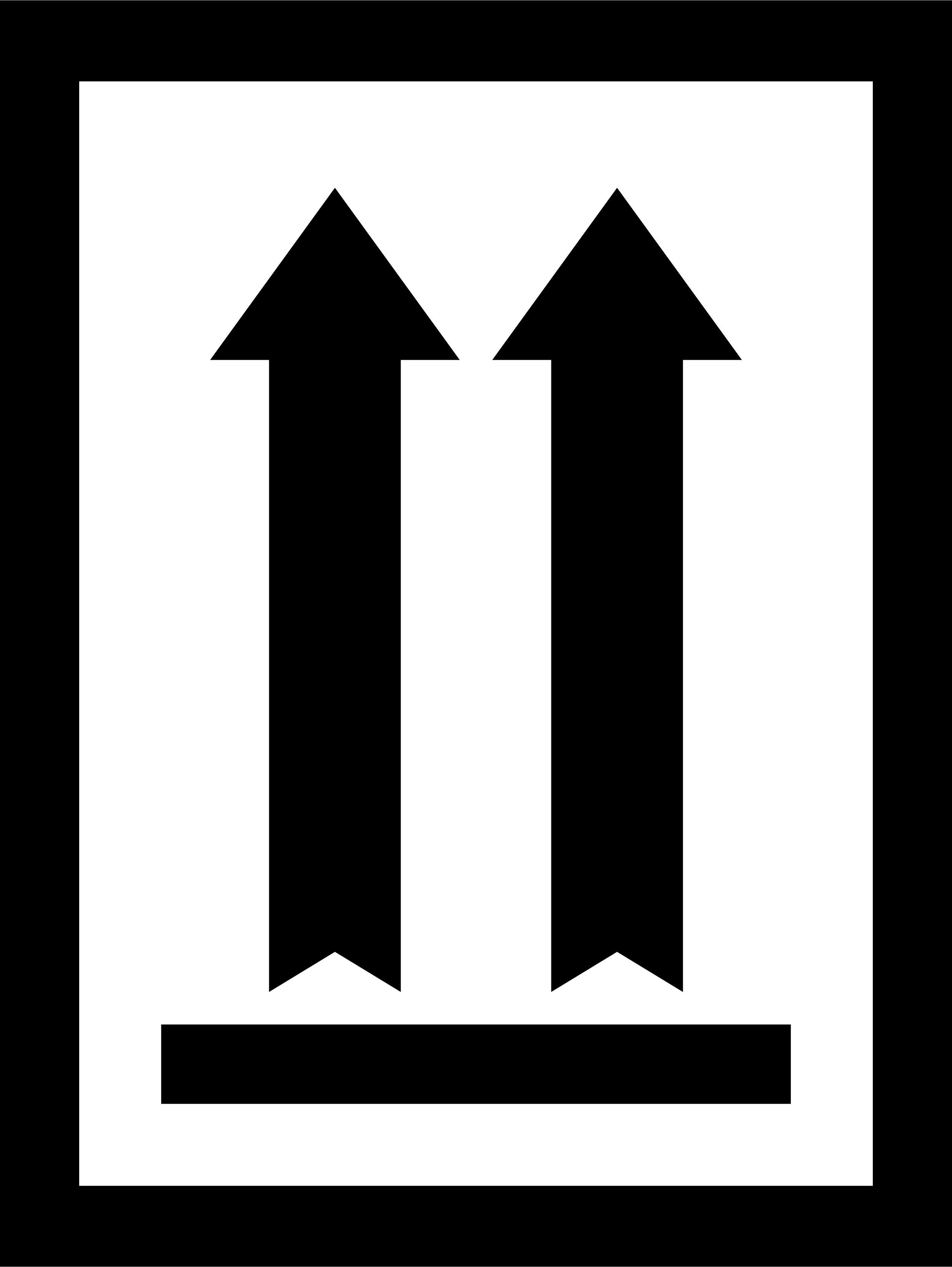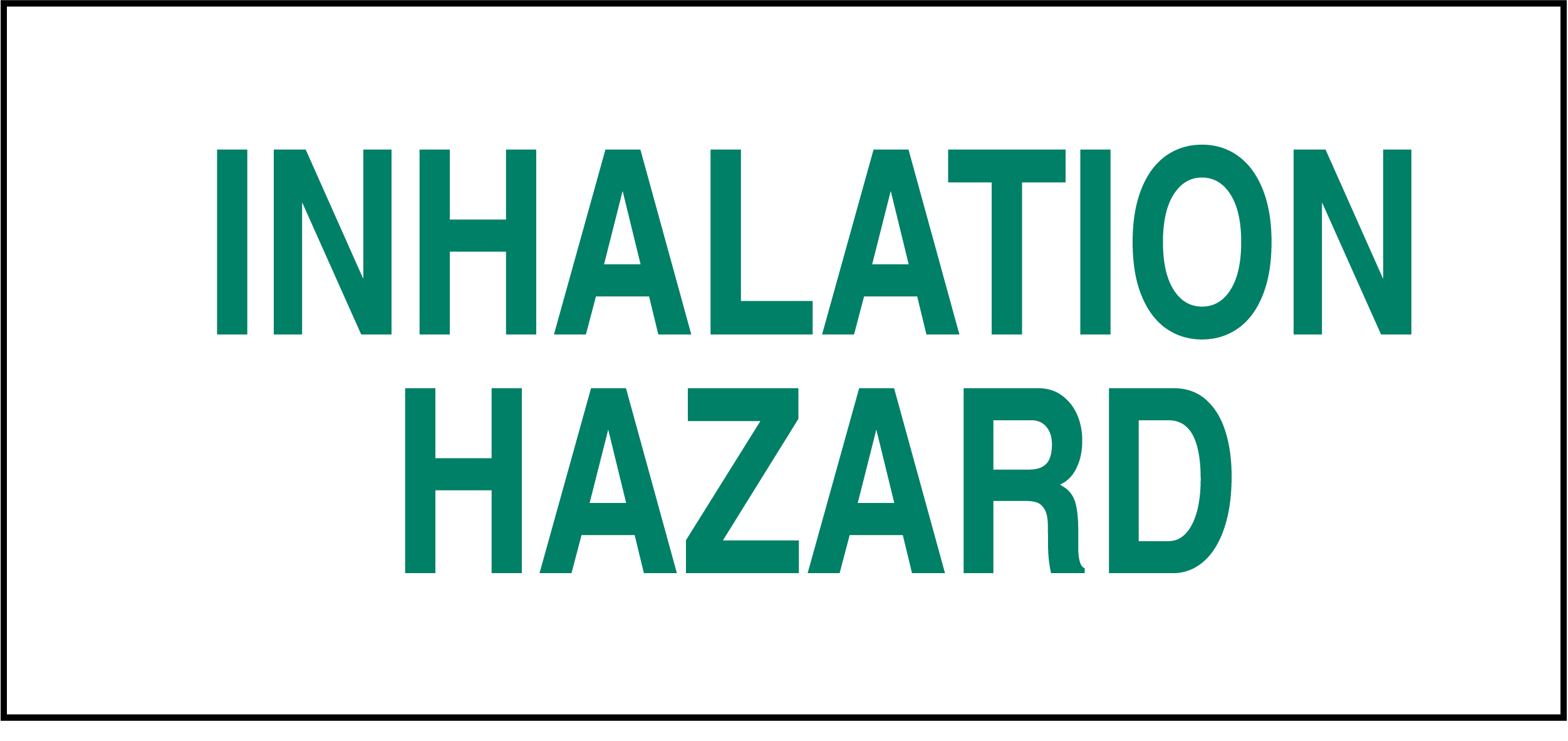Markings for hazardous wastes, orientation arrow markings, and inhalation hazards

- The nature of the hazardous material being transported and the kind of package used can determine whether additional markings are necessary.
- The list of material categories that might need additional markings includes hazardous wastes, orientation arrow markings, and inhalation hazards.
Additional markings may be required depending on the hazardous material being transported or the type of package used.
Hazardous wastes
Proper shipping names marked on non-bulk packages of hazardous waste are not required to include the word “waste” if the U.S. Environmental Protection Agency (EPA) marking is displayed in accordance with 40 CFR Section 262.32.
Orientation arrow markings
Combination packagings that have inner packagings containing liquid hazardous materials, single packaging fitted with vents, or open cryogenic receptacles must be marked with orientation arrows. These arrows must be displayed on two opposite vertical sides of the packaging — with the arrows pointing in the correct upward direction.

Orientation arrows are not required on packages that contain:
- Inner packagings of cylinders;
- Flammable liquids in inner packagings of 33.81 fluid ounces (1 L) or less prepared as a limited quantity or consumer commodity, except for transport by air;
- Flammable liquids in inner packagings of 4 fluid ounces (120 mL) or less prepared as a limited quantity or consumer commodity, when packed with sufficient absorption material between the inner and outer packagings to completely absorb the liquid contents, when transported by air;
- Liquids contained in manufactured articles (e.g., alcohol or mercury in thermometers) that are leak-tight in all orientations;
- Hermetically sealed inner packagings; or
- Liquid infectious substances in primary receptacles not exceeding 1.7 ounces (50 mL).
Inhalation hazards
Packagings that contain materials poisonous-by-inhalation must be marked “INHALATION HAZARD” in association with required labels or placards or the proper shipping name. The “INHALATION HAZARD” marking is not required if the package bears a poison gas or poison inhalation hazard label (or placard) displaying the words “INHALATION HAZARD.”

This marking on bulk packages must be on two opposite sides and have:
- A minimum width of 0.24 inches (6 mm) and a minimum height of 3.9 inches (100 mm) for rail cars,
- A minimum width of 0.16 inches (4 mm) and a minimum height of 1 inch (25 mm) for portable tanks with capacities of less than 1,000 gallons (3,785 L) and intermediate bulk containers, and
- A minimum width of 0.24 inches (6 mm) and a minimum height of 2 inches (50 mm) for cargo tanks and other bulk packagings.
